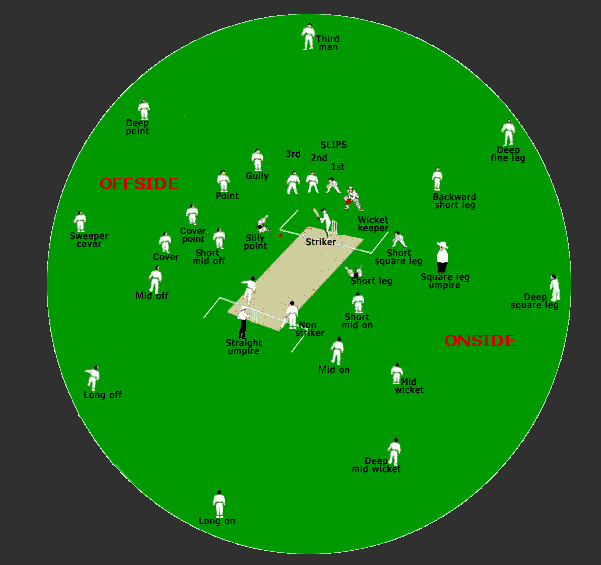
Fielding is considered one of the most important parts of cricket. As a result, it is equally important for a captain to keep his players in the correct fielding position on the field. However, as spectators, people are often confused by the fielding positions addressed in the game of cricket. Many times, commentators address locations on the ground with several interesting names. However, these terms of cricket make them sound fun, especially the position of fielding in cricket.
When we go for fielding only 11 players are allowed from the fielding team on the ground. Many cricket betting sites allow you to choose 11 players and create your own team to earn money from fantasy cricket. There are nine different types of fielding positions on the field remaining two players are wicket-keeper and bowler. In this article, we will try to explain all cricket fielding position names.
Wicket-Keeper
Wicket-Keeper is a player who stands behind the stumps on the field. He watches every moment of the batsman and always ready to take catches, stump, and run-out a batsman. Wicket-Keeper is one of the most important players on every cricket team. Because he has an important fielding position in cricket. At the time of spinner wicket-keeper stands near to the stump but against the pace bowler and he takes few steps back. A major role of the wicket-keeper is to stop delivery that passes by the batsman.
Cover
It’s a very crucial job for every fielder who fields at the cover. A cover fielder stands in front of a square on the off-side and they stand on edge of the inner circle. A cover fielder can create lots of run-out opportunities for his team.
Point
A point is a fielding position in which a player stands at the square of the wicket on the offside of the batsman. It depends on the pace of the bowling how far they stand from the bat. A proactive fielder is placed in the point position like Ravindar Jadeja. You can make a strong impact on the game while standing on-point position.
Gully
Gully fielder stands on the right side of the off-side slips. And he stands inside a 30-yard circle on the field. Gully fielder must be more quick and active to save runs in the powerplay. He can also create a chance of running out to build up pressure on batsmen.
Third Man
The third man is a fielding position in which the player stands behind the wicket-keeper on the off-side near the boundary ropes. The third man usually saves lots of runs on the field. There are many batsmen like Virat Kohli who love to play shot in third man position.
Slip
A slip fielder stands behind the batsman and they are also close to the wicket-keeper on the field. There are different types of slips like a first slip, second slip, third slip, and fourth slip. A leg slip fielder stands on the other side of the wicket-keeper. We can’t place more than one leg slip fielder on the field because it’s illegal. This is one of the most important fielding positions to take wickets.
Mid-Off
The mid-off fielder stands close to the batsman on the offside of the field. If you are doing fielding on Mid-off just wear your all protective pieces of equipment. You must be able to make difficult catches because your position is close to the batsman.
Long On
Long On fielder is placed on the leg side of the batsman. Mostly captain will use long on and long off fielding positions for a fast bowler. This fielding position is similar as long off just an opposite difference.
Long Off
A long-off fielder is placed wide of straight on the offside. Many batsmen play shot into this area. If you are standing on long-off then be ready to take a catch because batsman will try to play aerial shots.
Mid On
The mid-on fielder is placed on the leg side of the field. The job of the mid-on fielder is quite similar to the mid-off fielder. They create pressure on batsmen while taking single. This is the best position for captains to place themselves in.
Mid Wicket
Mid Wicket fielder is placed in front of the square on the leg side of the batsman. He stands on the edge of the inner circle. The Mid-wicket fielding position is the most important position because many batsmen play shots into this area. Mid-wicket needs to be alert because chances of catches are very high if you are in a mid-wicket position.
Square Leg
The square leg fielder is placed square to the wicket on the leg side of the field. If you want to check the square leg position then just see where the second umpire is standing. He will definitely stand in the square leg position. The square leg fielder must be achieved to stop singles.
Fine Leg
A fine leg fielder is placed behind a square on the leg side of the field. They must be on the edge of the inner circle on the field.
Leave a Reply